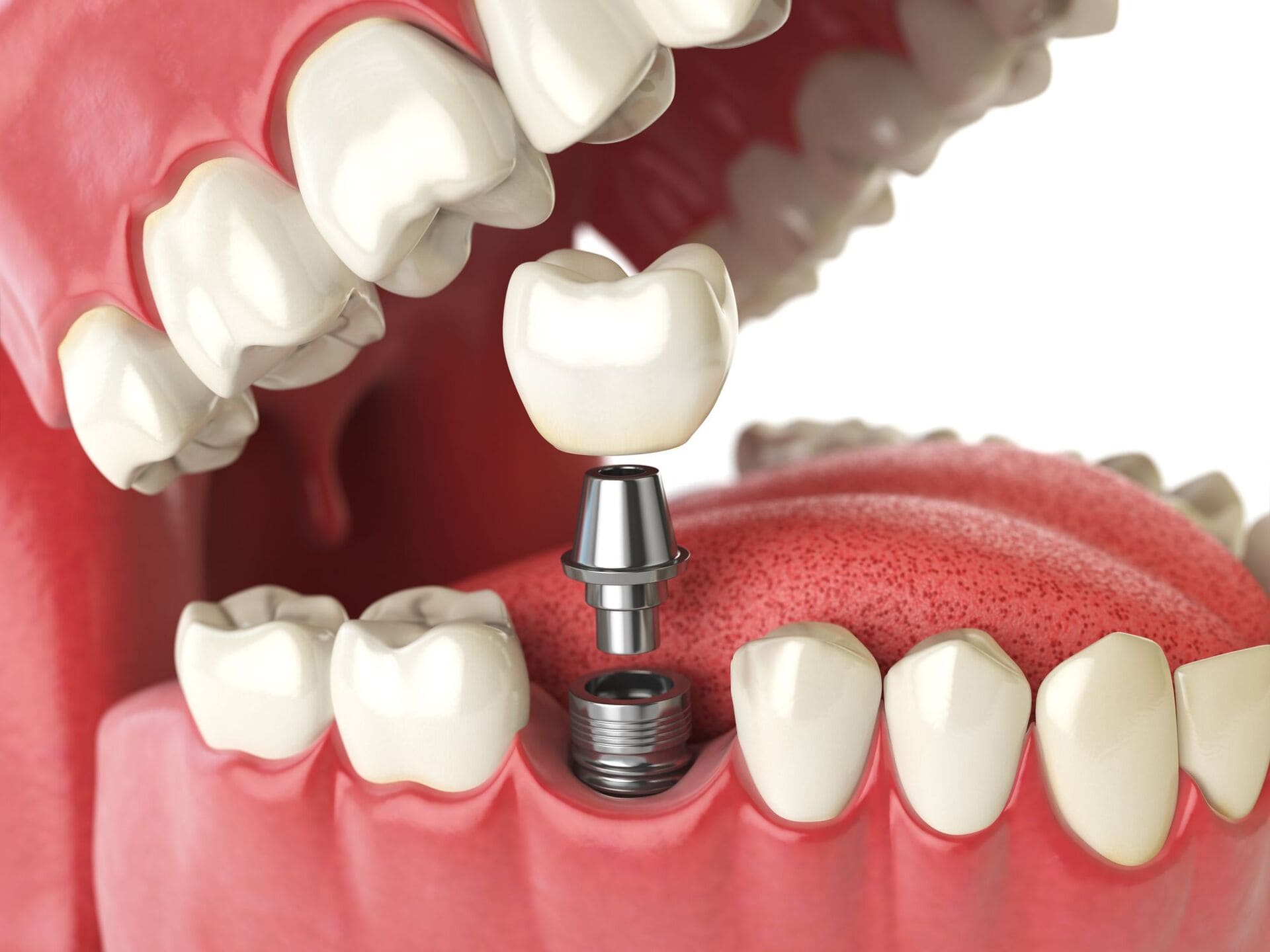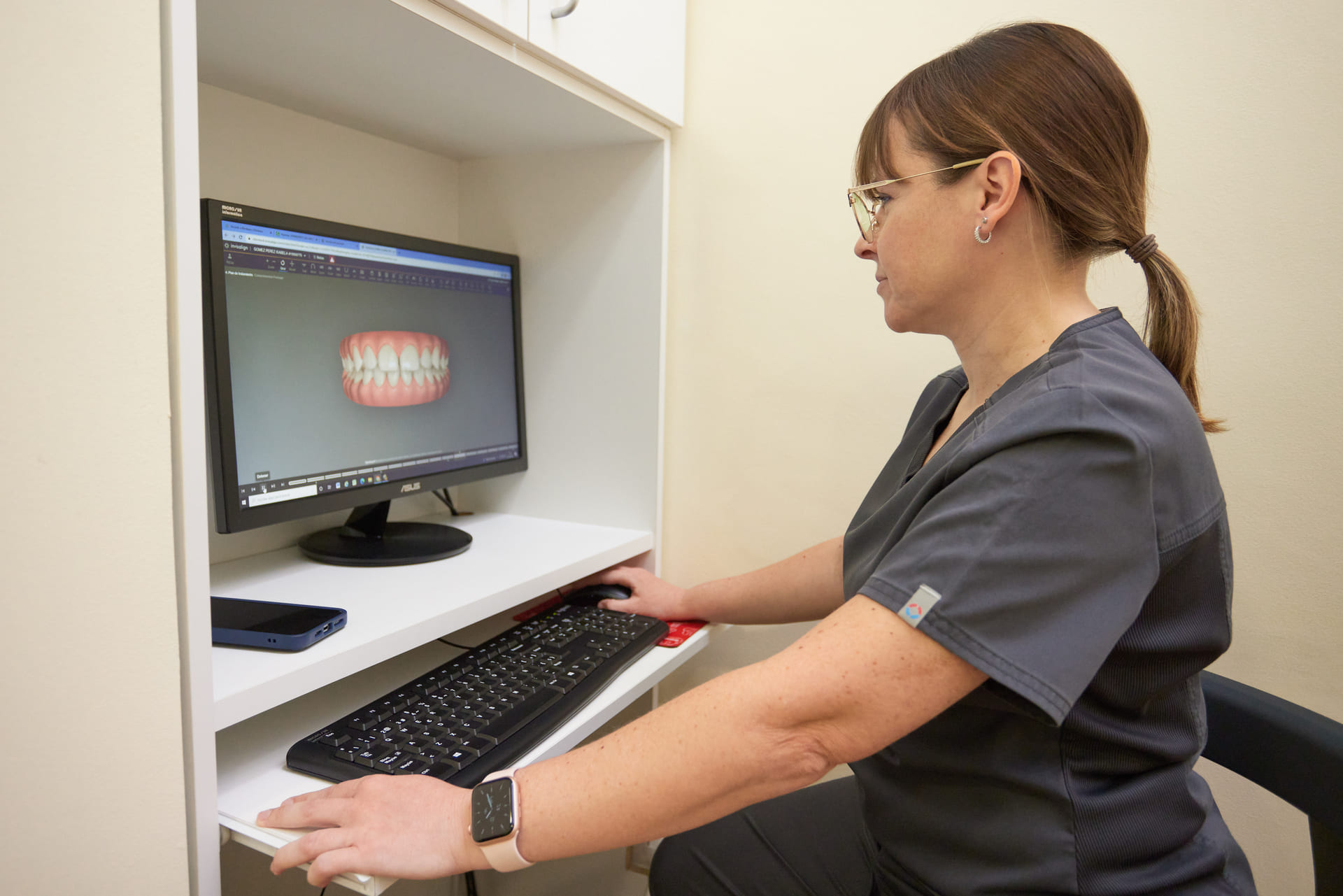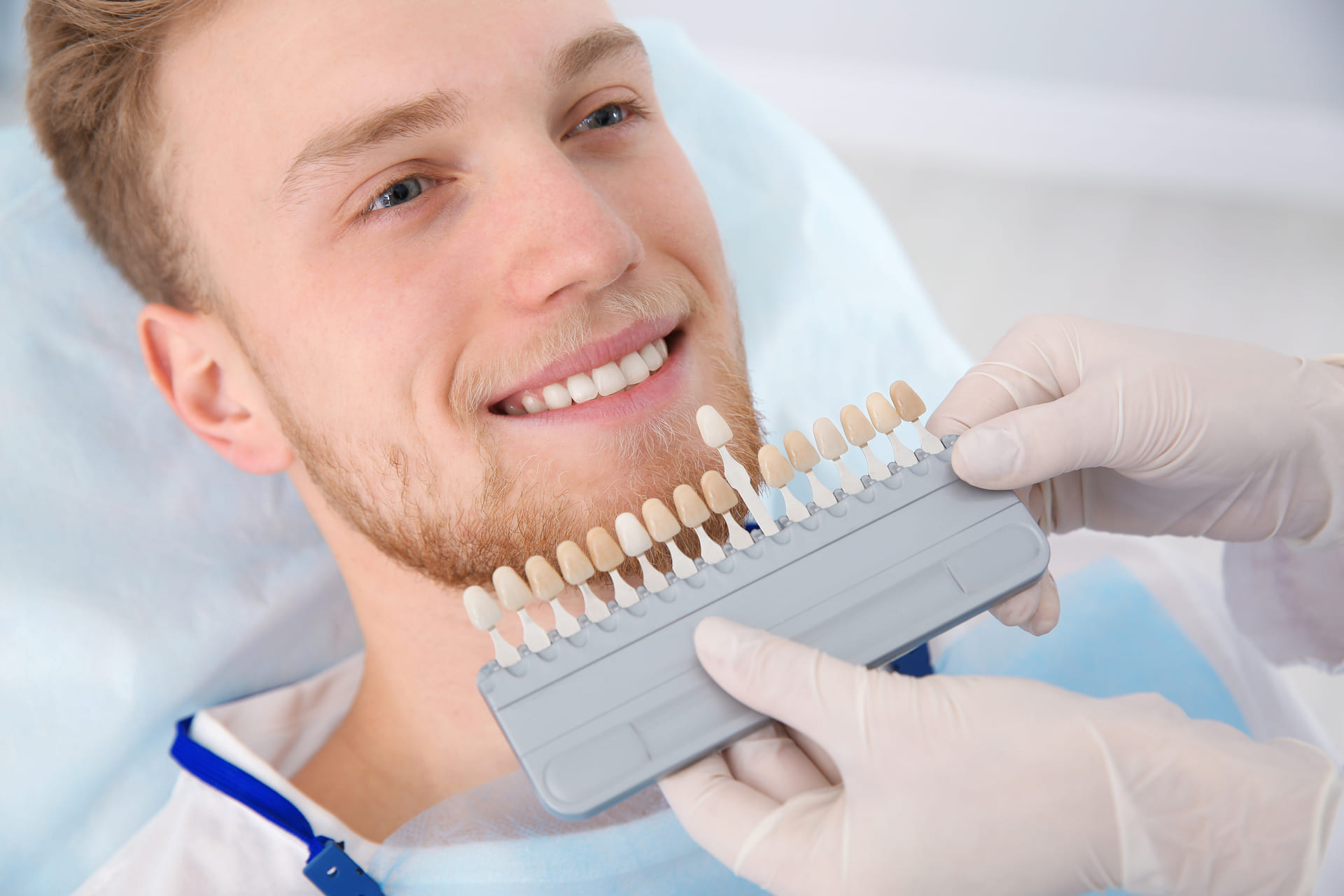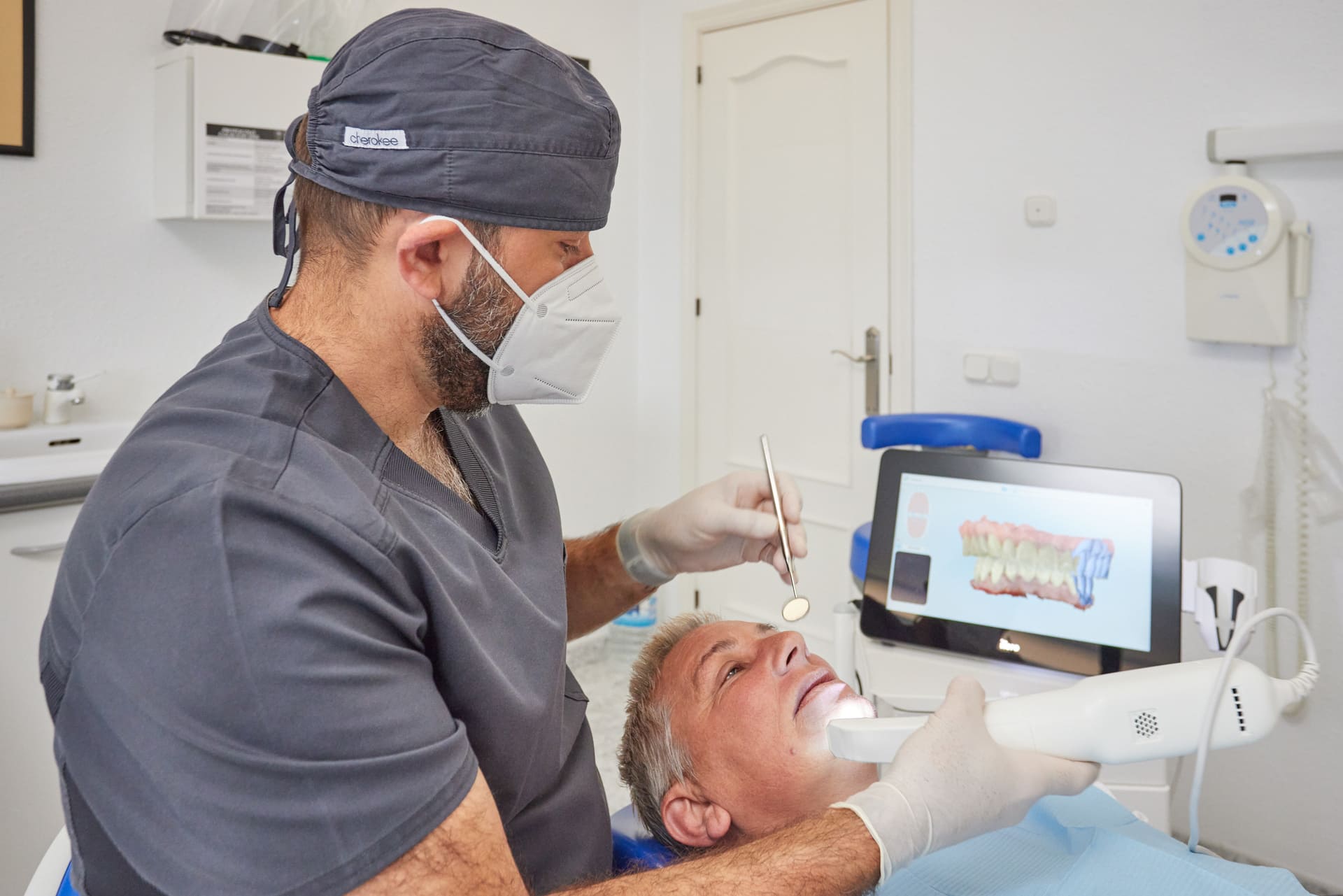"We use the latest technologies to replace missing teeth with osteointegrated implants as anchors"
What are dental implants?
The loss of a tooth has more consequences than we initially think.
In the first instance, the most obvious consequence is the impossibility of proper chewing. The antagonist tooth, the tooth with which the missing tooth previously met, no longer has a partner for its masticatory function.

Most visibly is the cosmetic effect, especially in the front teeth (incisors, canines and premolars). The absence of these teeth can have a large effect on the way people see you.
A less-valued consequence is the movement of neighbouring teeth. Front teeth tend to move backwards, back teeth to move forwards and the antagonist teeth start to extrude more in search of their counterpart. This can result in modification in the bite, deformation in tooth position, and loss of the space left by the missing tooth. Perder
The most modern way in which to replace teeth, which also achieves the best results, is to use a dental implant. A dental implant is a long piece, similar to a screw, which is inserted into the bone, mimicking the function of the natural root. At Sermadent Dental Centre we use implants of pure titanium to ensure superior biocompatibility and minimize the chance of rejection. When the implant is fully integrated into the bone, we finish with a custom made crown which takes on the chewing and cosmetic function of the lost tooth.
Make AppointmentTypes of dental implants:
In our centres we use a wide range of implants with different shapes, diameters and lengths to provide a completely personalised solution for each individual case.
Get QuotationAdvantages
Replacing missing teeth with implants has many advantages, the main one being replacing the lost tooth without needing to touch or adapt any other teeth.
Another advantage is the ease of insertion. In the majority of cases the implant is inserted during a simple surgery which causes less discomfort than an extraction, and with the same anaesthesia. In some cases, stitches may be necessary, but it is a completely painless process.


In most cases, post operative care is not required and you can carry on with your normal life a few hours after the procedure.
Our platinum warrantee is another advantage that we offer in our centres. If, for any reason, the implant does not integrate into the bone, we will repeat the procedure at no extra cost. In the case of implant crowns, our warrantee offers repairs without any extra cost to the patient.
Make AppointmentThe treatment step by step
The first step is diagnosis and planning. We will take some 2D and 3D X-rays in our centres to have the necessary measurements of space and bone depth, in order to choose the implant best suited to the needs of the patient.
After selecting the correct implant, we will then proceed to its insertion, which is an outpatient surgical procedure. It is usually a simple procedure which does not require stitches; with the techniques used in our centres, the implant itself provides the necessary pressure and covers the area of the gum affected by the incision. However, in some cases the specialist may deem sutures necessary.
Once the implant has been put in, you need to wait for 8 to 12 weeks for oestointegration to take place. During this time the implant is almost completely covered by the gum and the body will grow bone around it. In cases where a more cosmetic finish is required, a provisional crown can be made from resin and is screwed onto the implant, however this is not recommended in the case of molars.
After osteointegration has been achieved, we can continue with the process of making the crown. Generally, the crown is made of metal and porcelain, consisting of a metal structure surrounded completely by porcelain, although there is also the option of making them in zirconium for an increased cosmetic finish. To make the crown we do a 3D intra oral scan, allowing us to avoid use of uncomfortable molds and impressions, increase the accuracy of the 3D image and to reduce the time taken to manufacture the crown.
Once the crown is fitted the tooth is completely functional. The only visits you then need are a checkup every six months to ensure everything remains in perfect condition.
Get Quotation